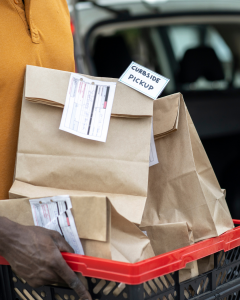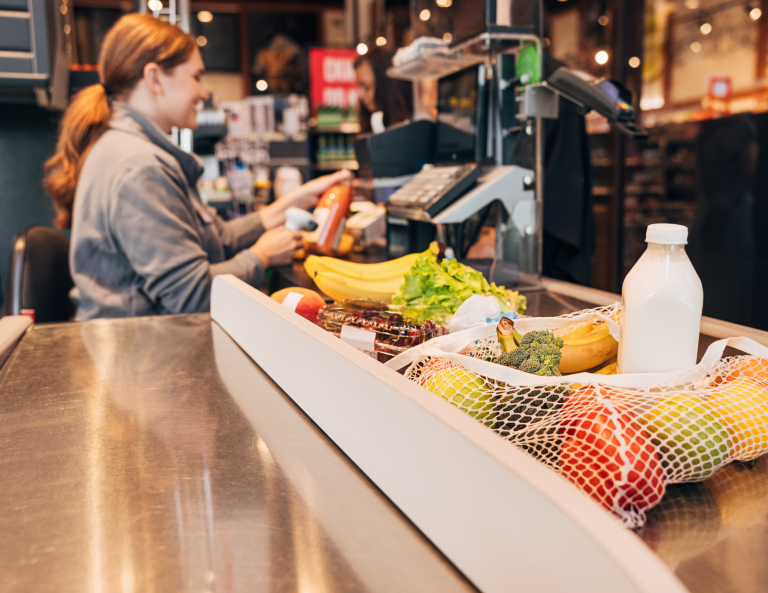Imagine it’s a Saturday afternoon, and your store is buzzing with shoppers. The checkout lines are getting longer, employees are scrambling to assist customers, and the curbside pickup team is struggling to keep up. You want to provide excellent service without overstaffing, but how do you find that balance? The answer lies in data.
 Having the right staffing resources in the right place at the right time is critical for retailers to maintain efficiency and deliver superior customer service. At the same time, labor costs remain one of the largest expenses in retail. According to the U.S. Bureau of Labor Statistics, labor accounts for nearly 10% of total retail operating costs. Optimizing staffing levels can lead to significant savings while improving the customer experience.
Having the right staffing resources in the right place at the right time is critical for retailers to maintain efficiency and deliver superior customer service. At the same time, labor costs remain one of the largest expenses in retail. According to the U.S. Bureau of Labor Statistics, labor accounts for nearly 10% of total retail operating costs. Optimizing staffing levels can lead to significant savings while improving the customer experience.
Enter Walkbase. Our advanced in-store sensor technology provides retailers with deep insights into store traffic patterns and employee and customer-shopping and behaviors. This is the third blog in our series exploring how Walkbase data goes beyond in-store retail media measurement. This time, we’re diving into how Walkbase can help you optimize labor, reduce costs and enhance service quality.
Reducing Labor Costs and Increasing Efficiency
What would a 10% reduction in labor costs mean for your business? For most retailers, it could be the difference between tightening margins and unlocking new growth opportunities. Walkbase helps you determine the right staffing levels by measuring foot traffic at entrances, exits and key areas throughout the store.
- Predict Staffing Needs: Walkbase’s real-time traffic data allows you to anticipate how many checkout lanes need to be open in the next 30 minutes based on current in-store footfall.

- Optimized Checkout Efficiency: Avoid overstaffing or understaffing by only opening the lanes necessary to keep queues short and customers happy.
- Improved Curbside Pickup: Track the carts of team members as they complete pickup orders for customers, optimizing order fulfillment and preventing congestion in high-traffic areas.
- Data-Driven Scheduling: Adjust shift schedules based on busiest times and days, ensuring your team is always working at peak efficiency without excess labor costs. Simple door counters tell you the volume of shoppers, but they don’t give insight into dwell or pathing, important data for staffing needs.
These adjustments lead to smarter labor allocation, reducing unnecessary spending while improving operational performance.
Improving Wait Times and Customer Service
Long lines and slow service are surefire ways to frustrate customers. Walkbase provides real-time insights into wait times at checkout and service counters, allowing you to act before customer dissatisfaction escalates.
- Monitor Dwell Times: Identify how long customers spend in checkout lines or at service desks. If wait times exceed a set threshold, Walkbase can trigger alerts to deploy additional staff.
- Heatmap Insights: Understand which areas of the store receive the most foot traffic and assign knowledgeable staff accordingly to engage with shoppers.
- Cart Abandonment Prevention: If long lines are causing customers to abandon their purchases, Walkbase data helps you proactively adjust staffing to reduce wait times and improve conversion rates.
- Threshold Alerts: When certain store areas experience high customer congestion, Walkbase sends real-time notifications so managers can quickly redirect employees to assist.
Better service isn’t just about having enough staff — it’s about having the right employees in the right place at the right time. With Walkbase, you can fine-tune your operations to enhance the shopping experience.
Asset and Fleet Management: Optimizing Resources
Efficient retail operations rely on proper asset management. Walkbase’s Bluetooth asset tagging technology enables you to track employees, essential operational equipment (power equipment) and shopping carts, ensuring in-store resources are allocated effectively.
- Staff Positioning: Tag associate badges with Bluetooth asset tags to determine their locations and dispatch the closest employee to assist a customer.
- Cart Tracking: Prevent cart shortages and unnecessary purchases by monitoring the number of carts available in-store at any given time.
- Parking Lot Alerts: Set up notifications to remind staff to retrieve carts when in-store availability drops below a certain threshold.
- Power Equipment Location: Tag powered lifts so employees can quickly locate the equipment they need when a customer requires product out of top stock.
By having precise knowledge of where resources are and how they’re being used, you can streamline operations and eliminate inefficiencies that lead to a poor customer experience.
Smarter Labor Decisions Start with Data 
In today’s competitive retail environment, cutting costs without sacrificing customer service is a delicate balancing act. Walkbase’s data-driven insights empower retailers to make smarter staffing decisions, reduce labor costs and enhance efficiency. From predicting foot traffic to improving checkout speed and optimizing asset management, Walkbase provides actionable intelligence that transforms store operations.
When you can see what’s happening in your store in real time, you can make informed decisions that improve both your bottom line and the shopping experience. Ready to enhance efficiency and boost customer service? Explore Walkbase’s solutions today.


